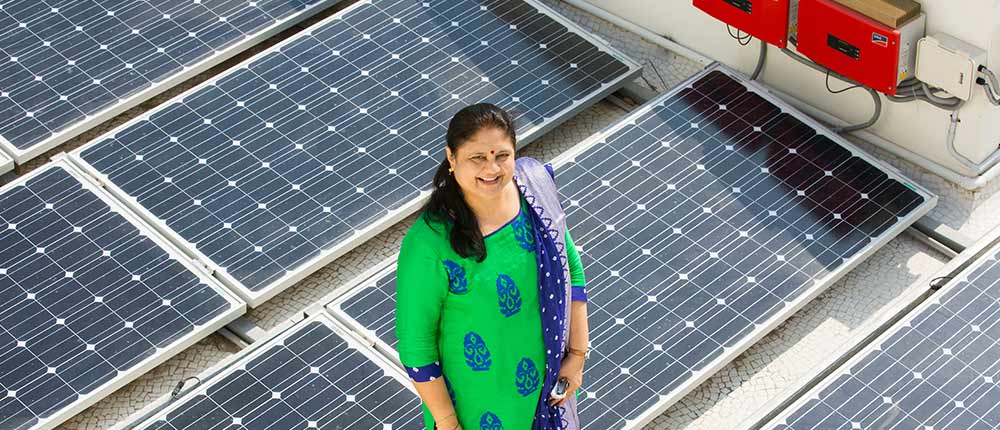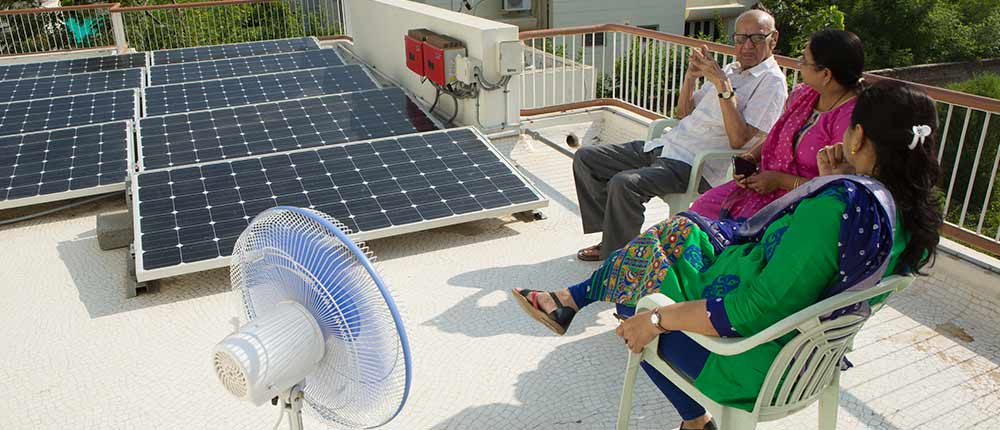Installing a solar PV system offers multiple environmental and economic benefits

Transitioning to renewable energy is an effective way to reduce your electricity cost and carbon footprint. A solar rooftop plant is one of the easiest and most cost-effective ways to meet your energy requirements. Typically, a solar rooftop plant of 1-kilowatt peak (kWp) capacity requires 10 square metres or 100 square feet in area, apart from a one-time investment of Rs.50,000–60,000. With a lifespan of 25 years, a 1 kWp system generates around 120 units of electricity a month and around 1,300–1,500 units a year, depending on its location.
The multiple advantages of transitioning to this clean energy system should appeal to our environmental consciousness and economic sensibilities. Let us look at some of these advantages:
-
Reduced electricity costs: An average household consumes around 3,600 units of electricity a year while a solar rooftop plant of 2 kWp capacity generates 2,600–3,000 units annually. This effectively means that most households' electricity consumption would be free of cost after installing a solar rooftop plant and connecting it to the grid via net metering.
Under the net metering mechanism, the power generated by the plant is used for household consumption and any excess power is fed back to the grid. If the amount of power generated is not sufficient, loads are served by drawing power from the grid. When your solar rooftop plant produces more power than is being consumed, the electricity meter records the units fed into the grid. If the power consumption exceeds generation, the meter records that as well. At the end of the month, you have to pay only for the net electricity consumed. However, if more power is generated than consumed, the extra units of electricity are credited to the next month's bill for settlement. At the end of the year, the power utility pays you for any excess generation. This system ensures that you are charged only for the net power consumed (consumption minus generation).
Additionally, you save in the higher tariff slab. For instance, the first 100 units of electricity consumption in Delhi are charged at Rs. 2 per unit while the next 100 are charged at Rs. 4 per unit. If the power consumption is between 200–400 units, you are charged around Rs. 6 per unit, and around Rs. 7.30 per unit if your consumption is between 400 and 800 units. As your net consumption goes down with solar rooftop and net metering, you will pay for electricity as per the lower tariff slab. Considering that electricity tariff increases 5–6 per cent every year, your savings will effectively increase over time. To calculate your potential savings, you can also access the free solar calculator tool available at solarrooftop.gov.in.
-
Appreciation in value and reduced carbon footprint: A solar rooftop system is among the few investments that appreciate with time as there is a constant increase in savings, as mentioned above. It is also an easy and cost-effective way to do your bit for the environment. With the consumption of every unit of thermal power, we generate 0.7 kg of carbon dioxide. Therefore, every unit of solar energy helps prevent 0.7 kg of carbon dioxide emission. Installing a 1 kWp solar rooftop plant is thus equivalent to planting two trees in terms of carbon sequestration.
-
Payback period: Depending on your state's tariff, the payback period for a solar rooftop system installed with an investment of Rs.1 lakh varies from 5–7 years. For instance, Delhi has a high tariff structure where electricity is charged at Rs. 8.95 per unit in the highest consumption slab. During summers, a two-BHK house consumes over 800–900 units of electricity. A solar rooftop system generates the highest amount of electricity in summers, and mitigates the steep bill, leading to savings of Rs. 8.95 per unit in this case.
-
Zero operation and maintenance cost: Consumers don't incur any maintenance and operational costs on a solar rooftop system as it does not have any moving parts. The only maintenance required is cleaning of the solar panels to ensure maximum absorption of sunlight. This is an easy process that can be done once a week or every 15 days, depending on the dust conditions in the area.
-
No space crunch or sound pollution: A solar rooftop plant does not make any noise during operations and the roof space it takes up can also be reduced by constructing an elevated structure to support the panels. This structure also provides a shaded roof and its associated advantages of reduced temperature in summers.

-
Simple steps to installation: All information regarding installation of a solar rooftop plant can be availed at solarrooftop.gov.in. You can calculate your potential savings and get details of various schemes through the website or a mobile app called Arun (Atal Rooftop Solar User Navigator). The solar interest form available on the website and the app connects you to channel partners in your area to facilitate installation. You can also contact your state's energy development agency through its website.
With sustainability at the core of our nation's vision for growth, transitioning to low-carbon energy systems is our collective responsibility. Let's contribute to the movement as the time to act for Earth is now.
